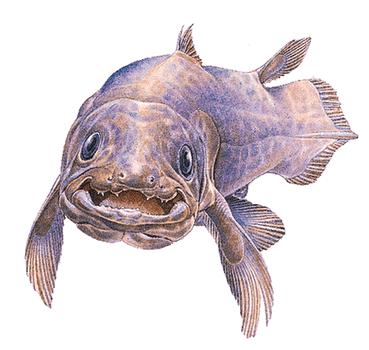
Another one for the "absence of evidence is not evidence of absence" files, matching my earlier noting of the non-extinct storm petrel, the coelacanth, a dinosaur-era fish from 400 million years ago, was thought to be extinct, until one was caught in 1938.
Alas, now it is in danger of actually becoming extinct.
The appearance of these creatures off the Tanzanian coast is a dramatic and as yet unfinished chapter in the extraordinary story of the coelacanth, an ancient fish that was 'rediscovered'. The coelacanth evolved 400 million years ago - by contrast Homo sapiens has been around for less than 200,000 years - and was believed to have gone the way of the dinosaurs until one was caught off the coast of South Africa in 1938.
...
The world waited another 14 years before the second coelacanth was 'discovered' in the Comoros, off the East African coast. Then several more were found and it was photographed for the first time in its natural habitat. But it is the appearance of the coelacanth off Tanzania that has raised real worries about its future.It was in August 2004 that the local fisheries authority first received a phone call saying fishermen in Kigombe had caught a 'strange' fish. Officials went to check and to their amazement found two specimens of Latimira chalumnae - the coelacanth. Over the next five months 19 more were netted - weighing between 25kg and 80kg. Another appeared last January, then there was a gap until the fish again turned up as The Observer visited.
Read the whole thing.
(Note: Image borrowed from here.)
The article ends with a great quote:
'Why should they save this fish?' he demanded. 'This is not a good fish. It's oily and you cannot eat this, and it's a smelly fish.' Fixing me with a puzzled look, he concluded: 'It's a bad fish.'Heh.

No comments:
Post a Comment